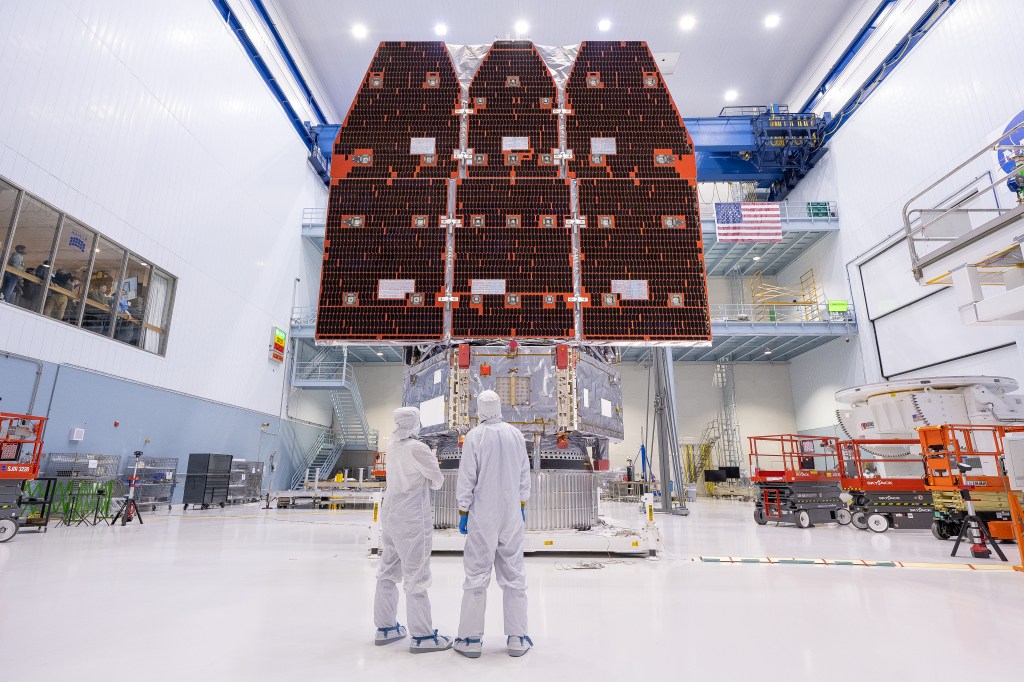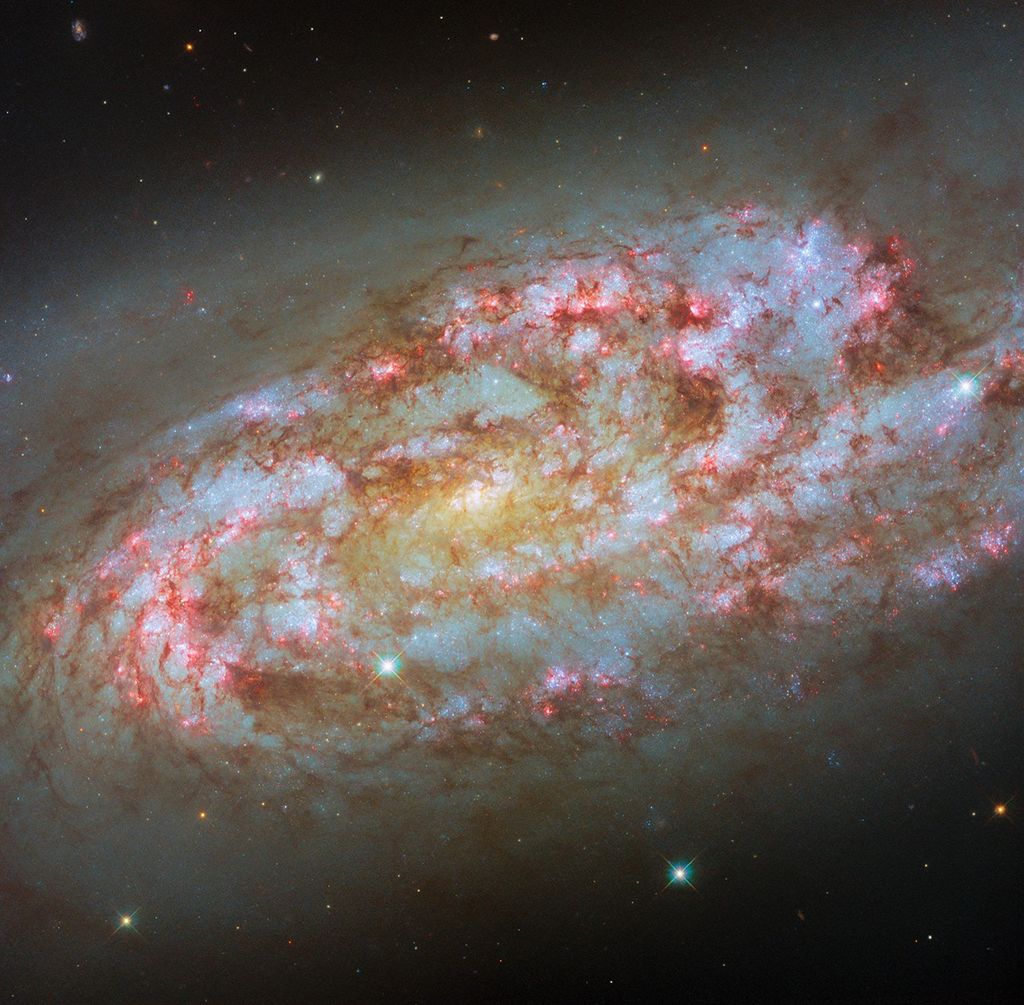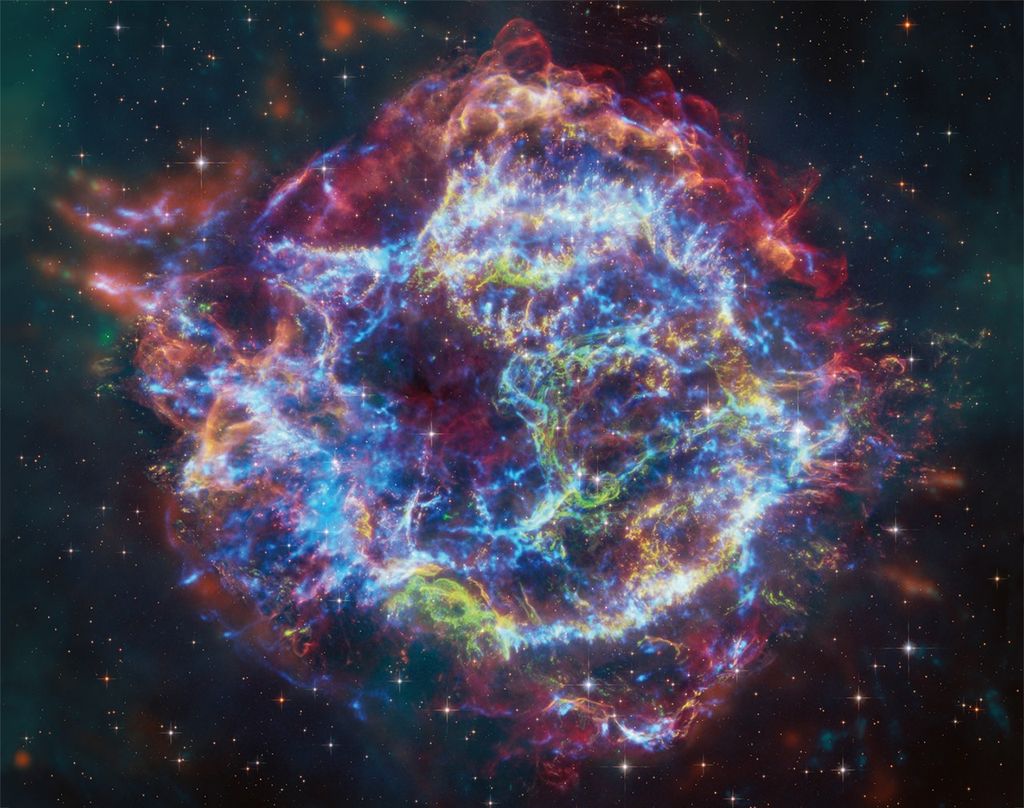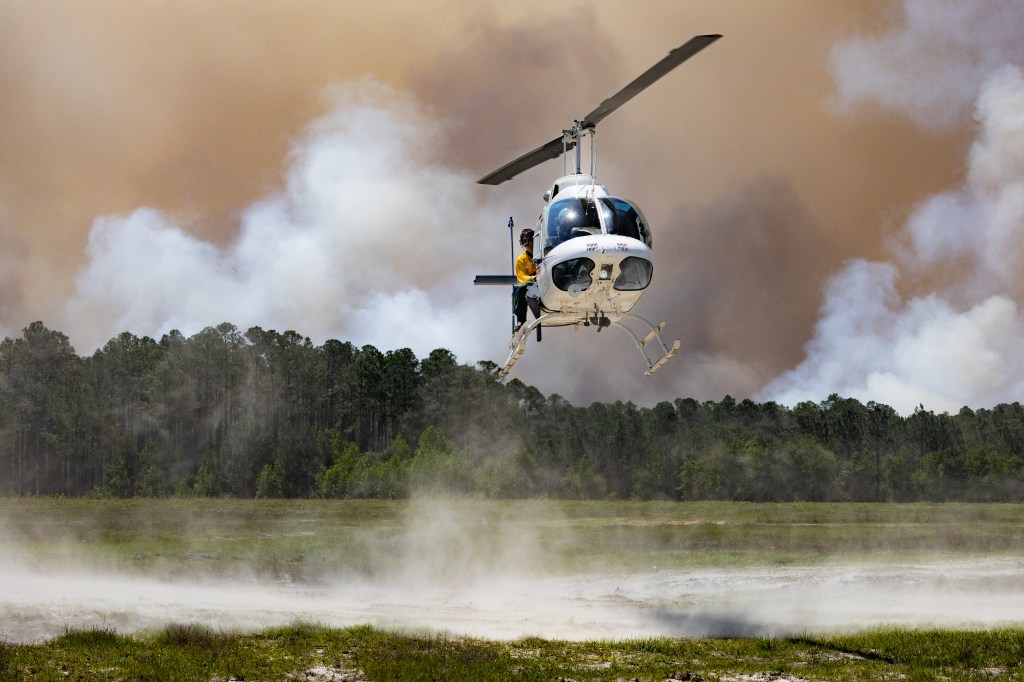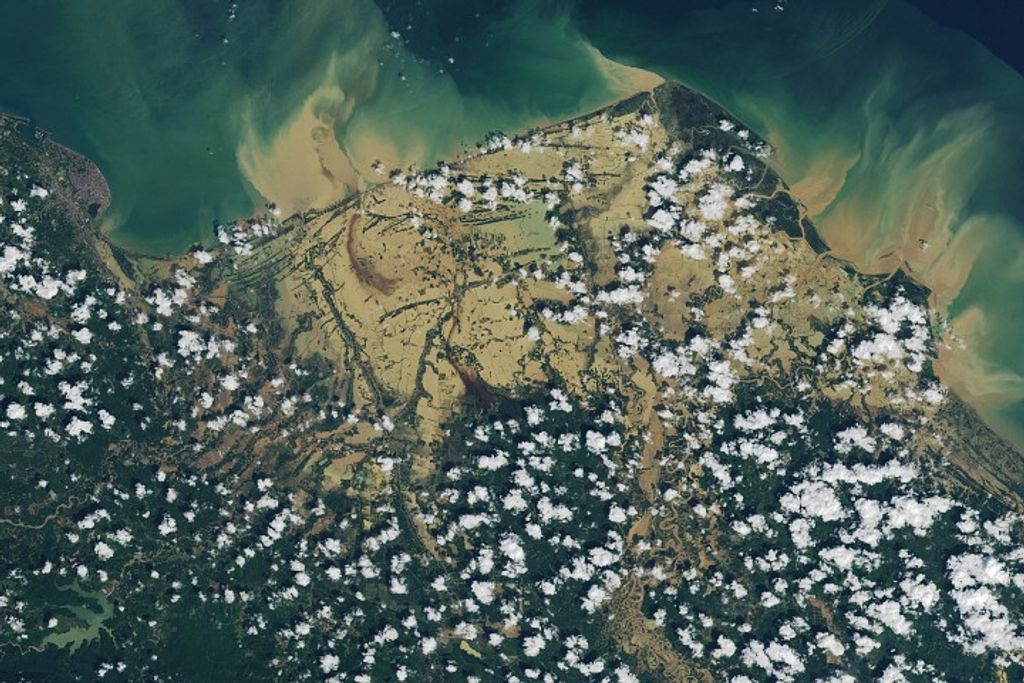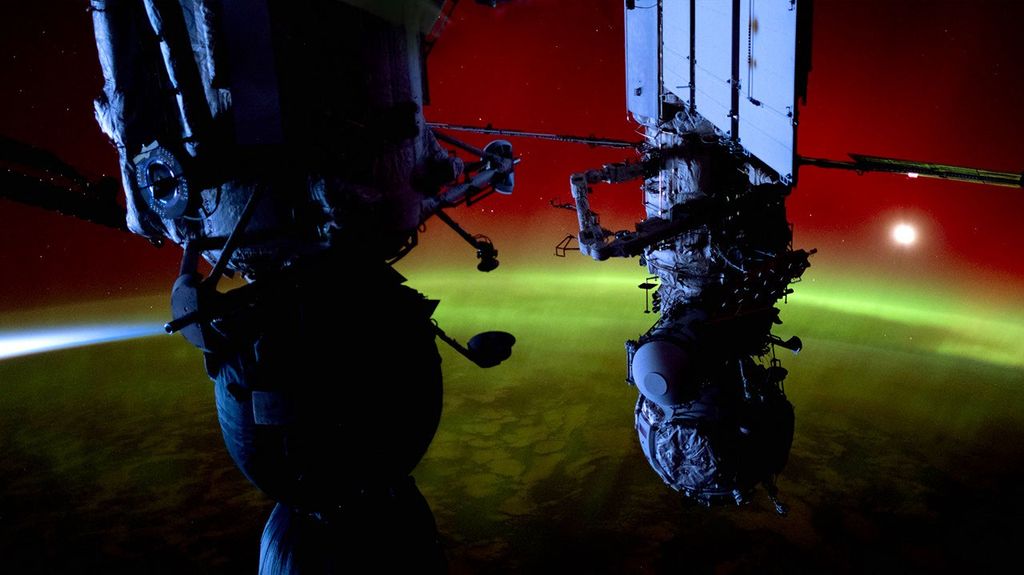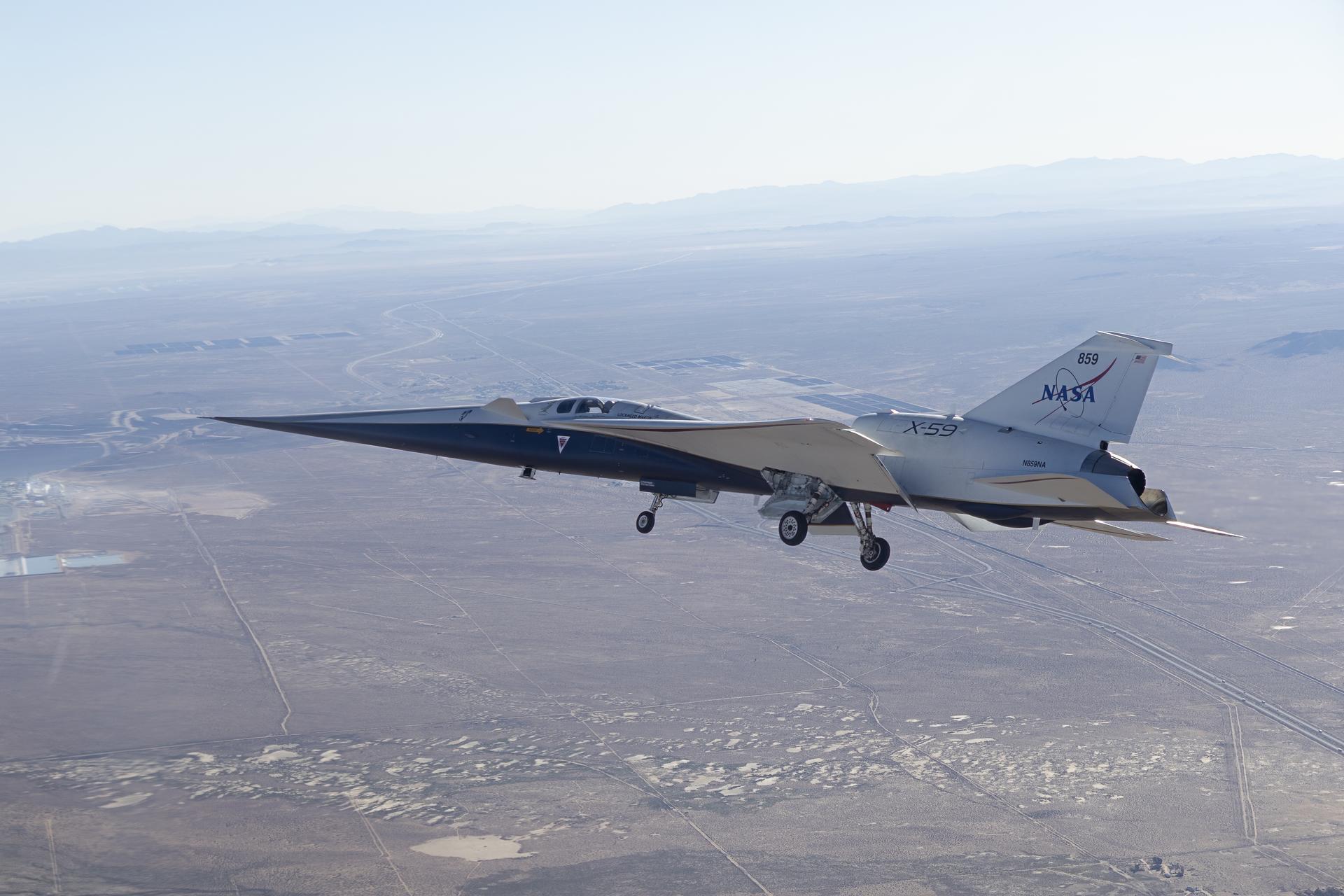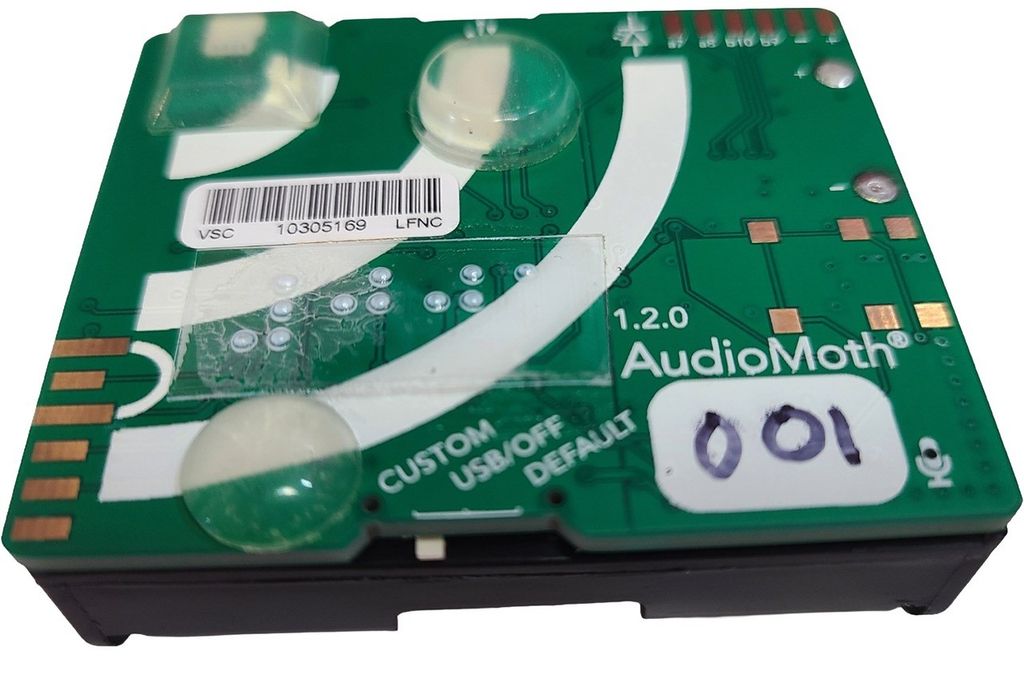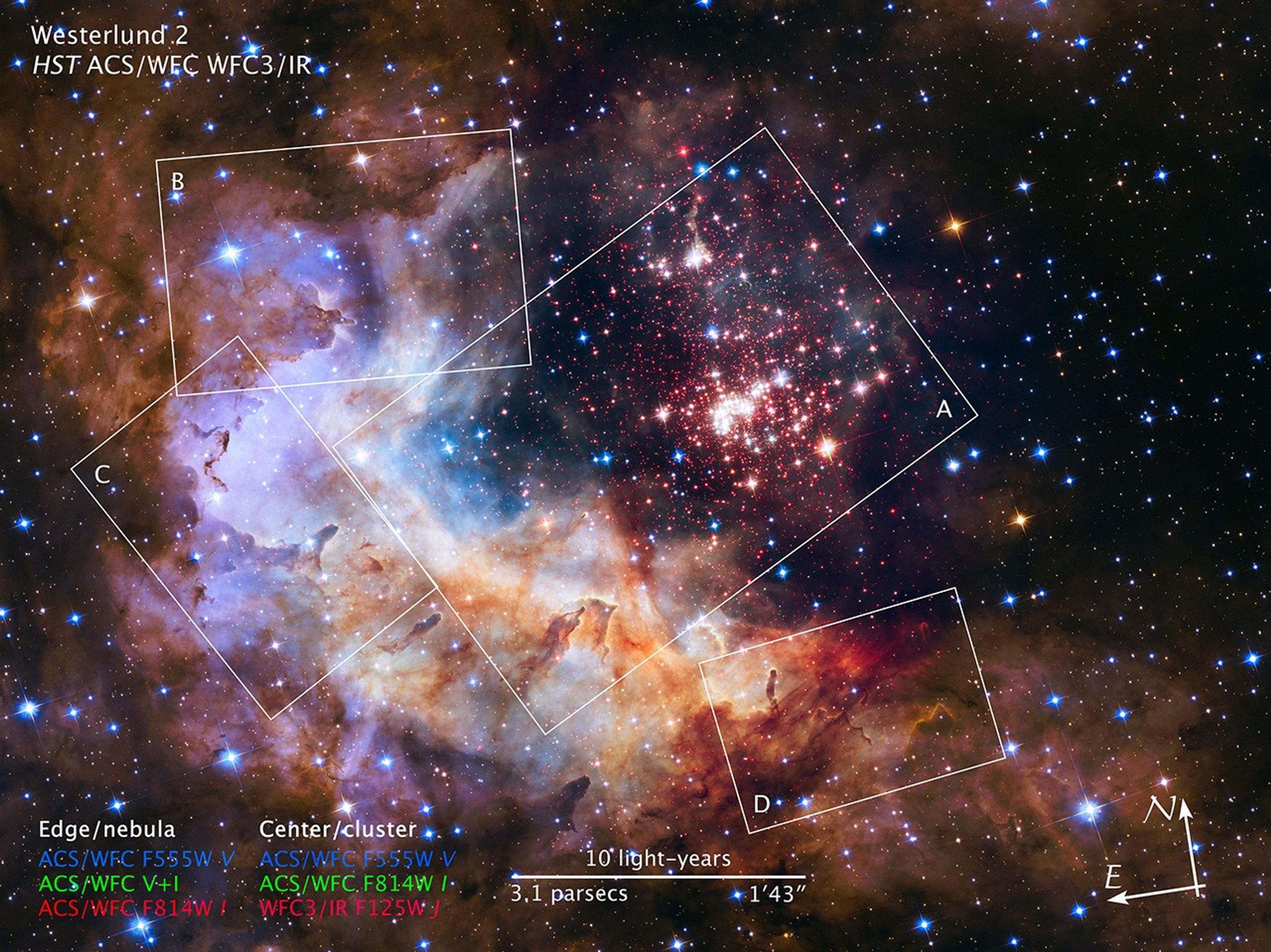1 min read
NASA Unveils Celestial Fireworks as Official Hubble 25th Anniversary Image

The brilliant tapestry of young stars flaring to life resemble a glittering fireworks display in the 25th anniversary NASA Hubble Space Telescope image to commemorate a quarter century of exploring the solar system and beyond since its launch on April 24, 1990.
"Hubble has completely transformed our view of the universe," said John Grunsfeld, astronaut and associate administrator of NASA's Science Mission Directorate. "This vista of starry fireworks and glowing gas is a fitting image for our celebration of 25 years of amazing Hubble science."
The sparkling centerpiece of Hubble's silver anniversary fireworks is a giant cluster of about 3,000 stars called Westerlund 2, named for Swedish astronomer Bengt Westerlund, who discovered the grouping in the 1960s. The cluster resides in a raucous stellar breeding ground known as Gum 29, located 20,000 light-years away from Earth in the constellation Carina.
To capture this image, Hubble's Wide Field Camera 3 pierced through the dusty veil shrouding the stellar nursery in near-infrared light, giving astronomers a clear view of the nebula and the dense concentration of stars in the central cluster. The cluster measures between 6 to 13 light-years across.
The giant star cluster is only about 2 million years old and contains some of our galaxy's hottest, brightest, and most massive stars. Some of its heftiest stars unleash torrents of ultraviolet light and hurricane-force winds of charged particles that etch at the enveloping hydrogen gas cloud.
The nebula reveals a fantasy landscape of pillars, ridges, and valleys. The pillars, composed of dense gas and thought to be incubators for new stars, are a few light-years tall and point to the central star cluster. Other dense regions surround the pillars, including reddish-brown filaments of gas and dust.
The brilliant stars sculpt the gaseous terrain of the nebula and help create a successive generation of baby stars. When the stellar winds hit dense walls of gas, the shockwaves may spark a new torrent of star birth along the wall of the cavity. The red dots scattered throughout the landscape are a rich population of newly forming stars still wrapped in their gas-and-dust cocoons. These tiny, faint stars are between 1 million and 2 million years old – relatively young stars – that have not yet ignited the hydrogen in their cores. The brilliant blue stars seen throughout the image are mostly foreground stars.
Because the cluster is very young – in astronomical terms – it has not had time to disperse its stars deep into interstellar space, providing astronomers with an opportunity to gather information on how the cluster formed by studying it within its star-birthing environment.
The image's central region, which contains the star cluster, blends visible-light data taken by Hubble's Advanced Camera for Surveys with near-infrared exposures taken by the Wide Field Camera 3. The surrounding region is composed of visible-light observations taken by the Advanced Camera for Surveys. The red colors in the nebulosity represent hydrogen; the bluish-green hues are predominantly oxygen.
The original observations of Westerlund 2 were obtained by the science team: Antonella Nota (ESA/STScI), Elena Sabbi and Carol Christian (STScI), Eva Grebel and Peter Zeidler (Astronomisches Rechen-Institut, Zentrum für Astronomie der Universität Heidelberg), Monica Tosi (INAF, Osservatorio Astronomico di Bologna), Alceste Bonanos (National Observatory of Athens, Astronomical Institute), and Selma de Mink (University of Amsterdam). Follow-up observations were made by the Hubble Heritage team: Zolt Levay (STScI), Max Mutchler, Jennifer Mack, Lisa Frattare, Shelly Meyett, Mario Livio, Carol Christian (STScI/AURA), and Keith Noll (NASA/GSFC).
About the Object
- R.A. PositionR.A. PositionRight ascension – analogous to longitude – is one component of an object's position.10h 23m 58.1s
- Dec. PositionDec. PositionDeclination – analogous to latitude – is one component of an object's position.-57° 45' 48.96"
- ConstellationConstellationOne of 88 recognized regions of the celestial sphere in which the object appears.Carina
- DistanceDistanceThe physical distance from Earth to the astronomical object. Distances within our solar system are usually measured in Astronomical Units (AU). Distances between stars are usually measured in light-years. Interstellar distances can also be measured in parsecs.20,000 light-years (6,130 parsecs)
About the Data
- Data DescriptionData DescriptionProposal: A description of the observations, their scientific justification, and the links to the data available in the science archive.
Science Team: The astronomers who planned the observations and analyzed the data. "PI" refers to the Principal Investigator.Data of Westerlund 2 were obtained from the HST proposals 14038: A. Nota (ESA/STScI), E. Sabbi and C. Christian (STScI), E. Grebel and P. Zeidler (Astronomisches Rechen-Institut, Zentrum für Astronomie der Universität Heidelberg), M. Tosi (INAF, Osservatorio Astronomico di Bologna), A. Bonanos (National Observatory of Athens, Astronomical Institute), and S. de Mink (University of Amsterdam); and 14039: Z. Levay, M. Mutchler, J. Mack, L. Frattare, S. Meyett, M. Livio, and C. Christian (STScI/AURA), K. Noll (NASA/GSFC), A. Nota (STScI/ESA), and E. Sabbi (STScI). - InstrumentInstrumentThe science instrument used to produce the data.HST>ACS/WFC and HST>WFC3/IR
- Exposure DatesExposure DatesThe date(s) that the telescope made its observations and the total exposure time.September 2013 - November 2014, Total Exposure Time: 23,074 seconds
- FiltersFiltersThe camera filters that were used in the science observations.ACS/WFC: F555W (V) and F814W (I) WFC3/IR: F125W (J)
- Object NameObject NameA name or catalog number that astronomers use to identify an astronomical object.Westerlund 2, Gum 29
- Object DescriptionObject DescriptionThe type of astronomical object.Cluster and Starforming Region
- Release DateApril 23, 2015
- Science ReleaseHubble Space Telescope Celebrates 25 Years of Unveiling the Universe
- Credit

These images are composites of separate exposures acquired by the ACS and the WFC3 instruments on the Hubble Space Telescope. Several filters were used to sample broad and narrow wavelength ranges. The color results from assigning different hues (colors) to each monochromatic (grayscale) image associated with an individual filter. In this case, the assigned colors are: Edge/Nebula Blue: F555W (V) Green: F555W (V) and F814W (I) Red: F814W (I) Central portion of Westerlund 2 Cluster Blue: F555W (V) Green: F814W (I) Red: F125W (J)
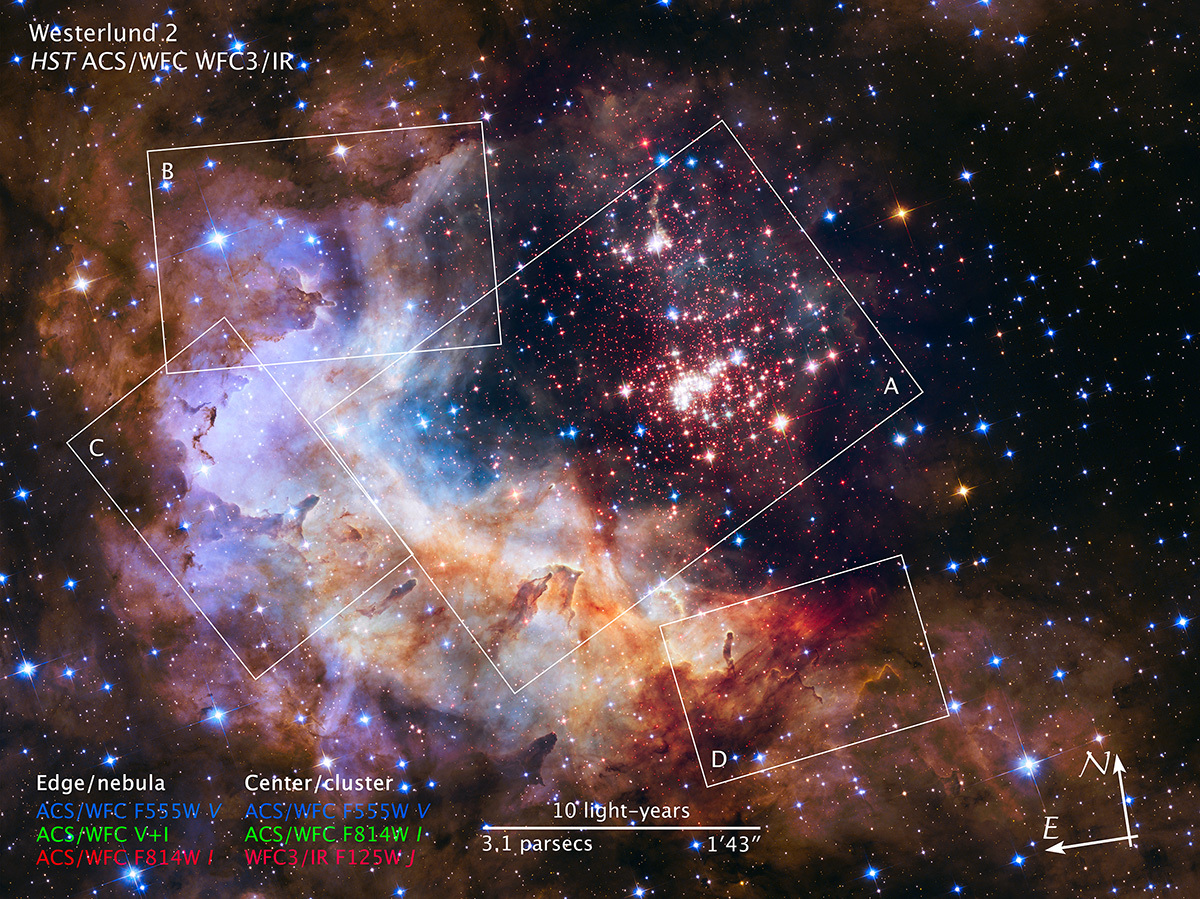
Related Images & Videos
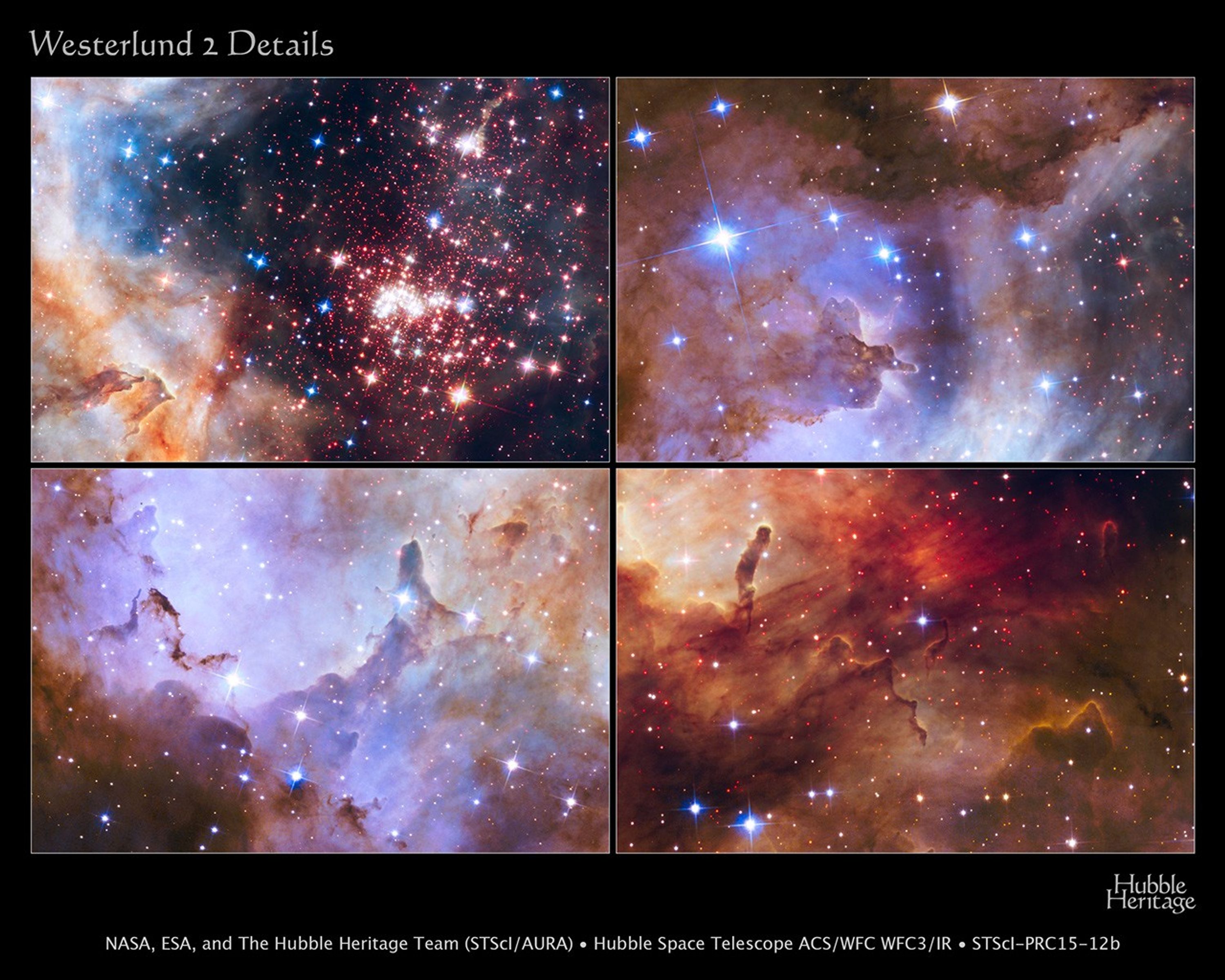
Details of Westerlund 2, Hubble's 25th Anniversary Image
A glittering tapestry of young stars flares to life in this NASA Hubble Space Telescope observation. These detailed close-ups are sections of a stunning image that is being released in celebration of Hubble's 25 years of exploring the universe since its launch on April 24, 1990....

Westerlund 2: Detail 2
Westerlund 2 is surrounded by the star-forming region Gum 29. The heaviest cluster stars are unleashing a torrent of ultraviolet radiation and hurricane-force winds streaming with charged particles, etching away the enveloping hydrogen gas cloud from where the cluster formed....

Westerlund 2: Detail 3
The pillars in the star-forming region surrounding Westerlund 2, composed of dense gas, are a few light-years tall and point to the central cluster. They are thought to be incubators for new stars. Besides sculpting the gaseous terrain, intense radiation from the most brilliant...

Westerlund 2: Detail 4
The red dots scattered throughout the landscape around Westerlund 2 are a rich population of newly forming stars still wrapped in their gas-and-dust cocoons. These tiny, faint stars are between 1 million and 2 million years old and have not yet ignited the hydrogen in their...
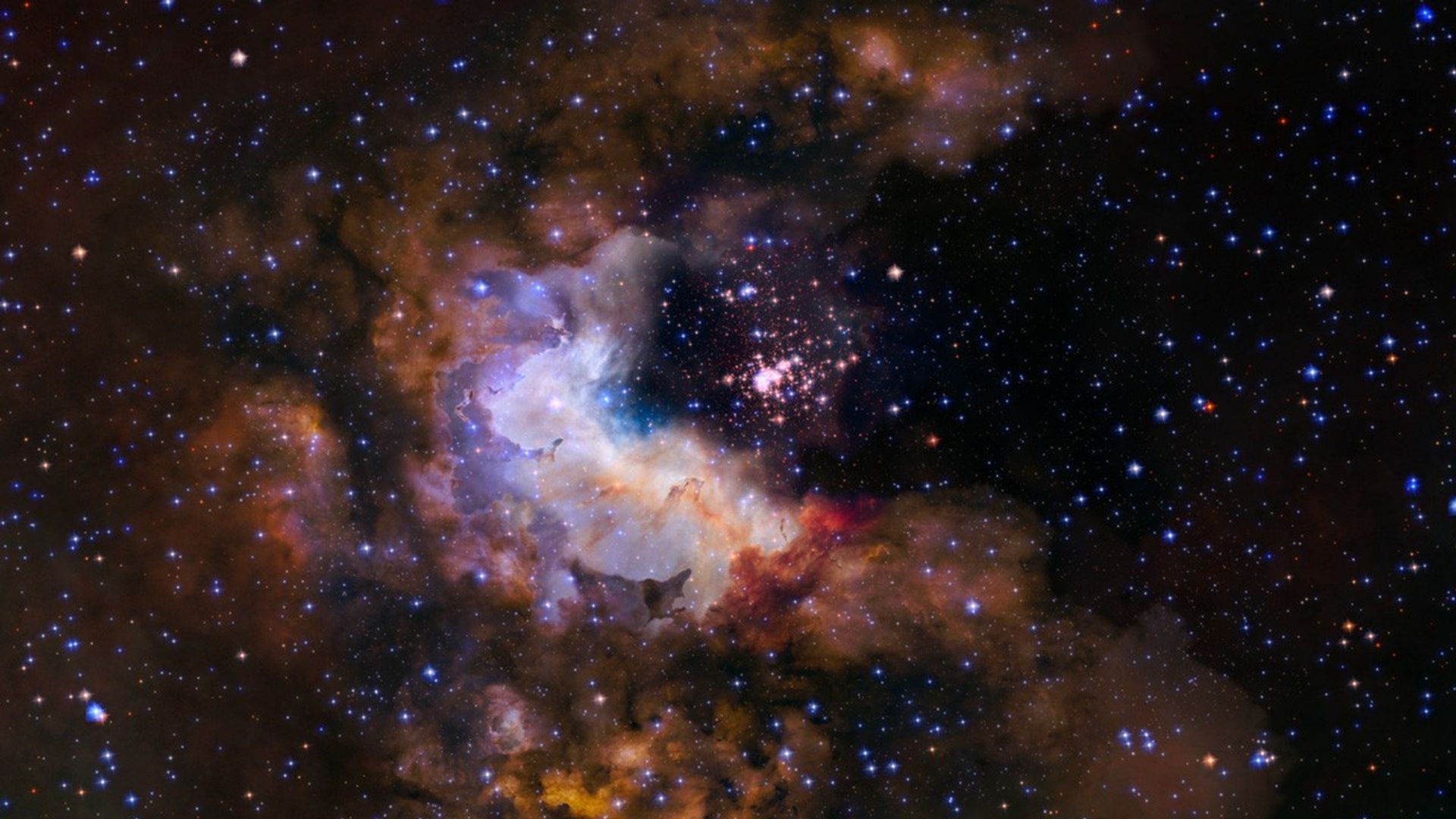
Flight to Star Cluster Westerlund 2
This visualization provides a three-dimensional perspective on Hubble's 25th anniversary image of the nebula Gum 29 with the star cluster Westerlund 2 at its core. The flight traverses the foreground stars and approaches the lower left rim of the nebula Gum 29. Passing through...
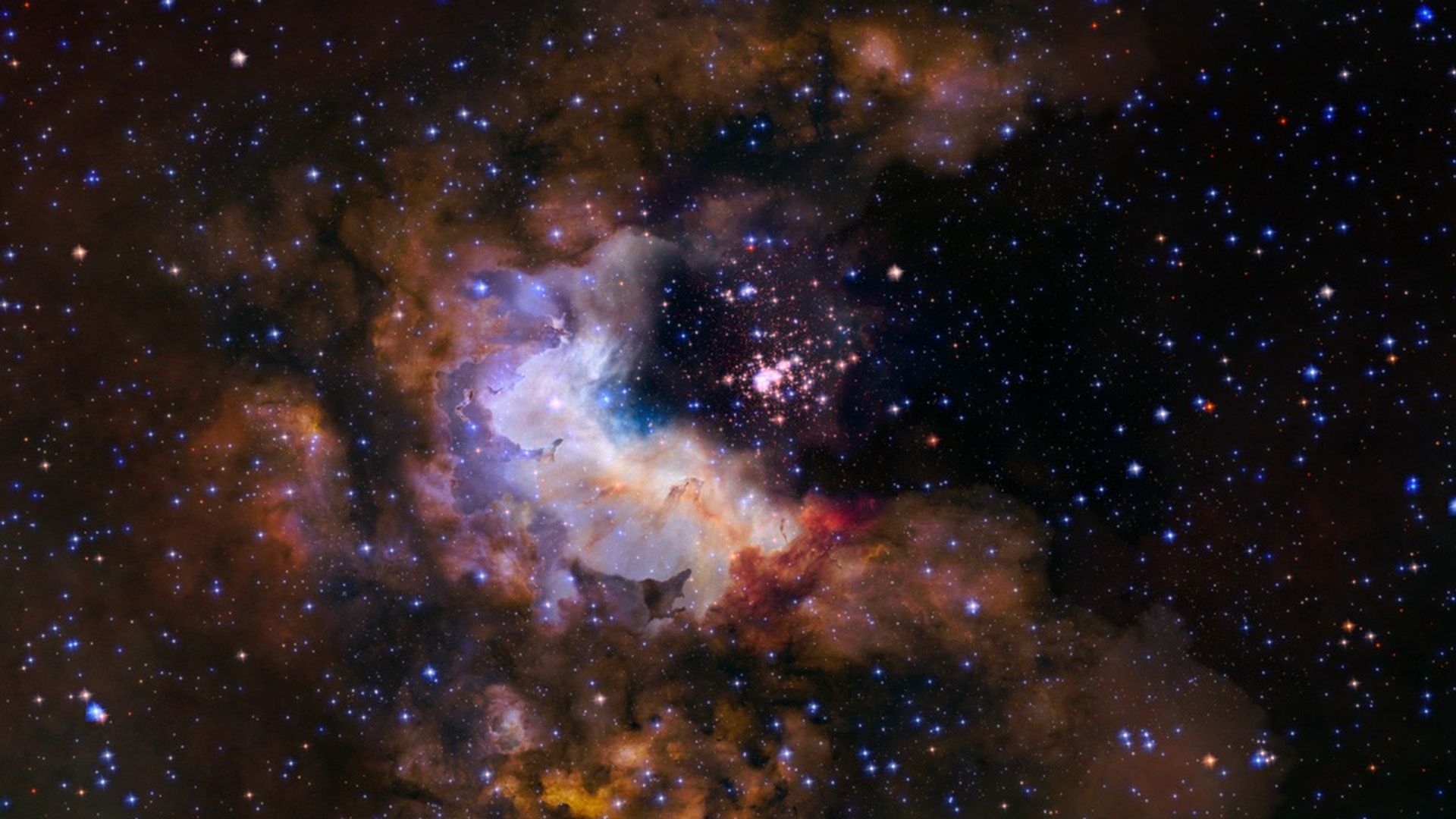
Flight to Star Cluster Westerlund 2 (Slower Flight)
This visualization is a half-speed, and thus twice as long, version of the flight to the star cluster. It provides a three-dimensional perspective on Hubble's 25th anniversary image of the nebula Gum 29 with the star cluster Westerlund 2 at its core. The flight traverses the...
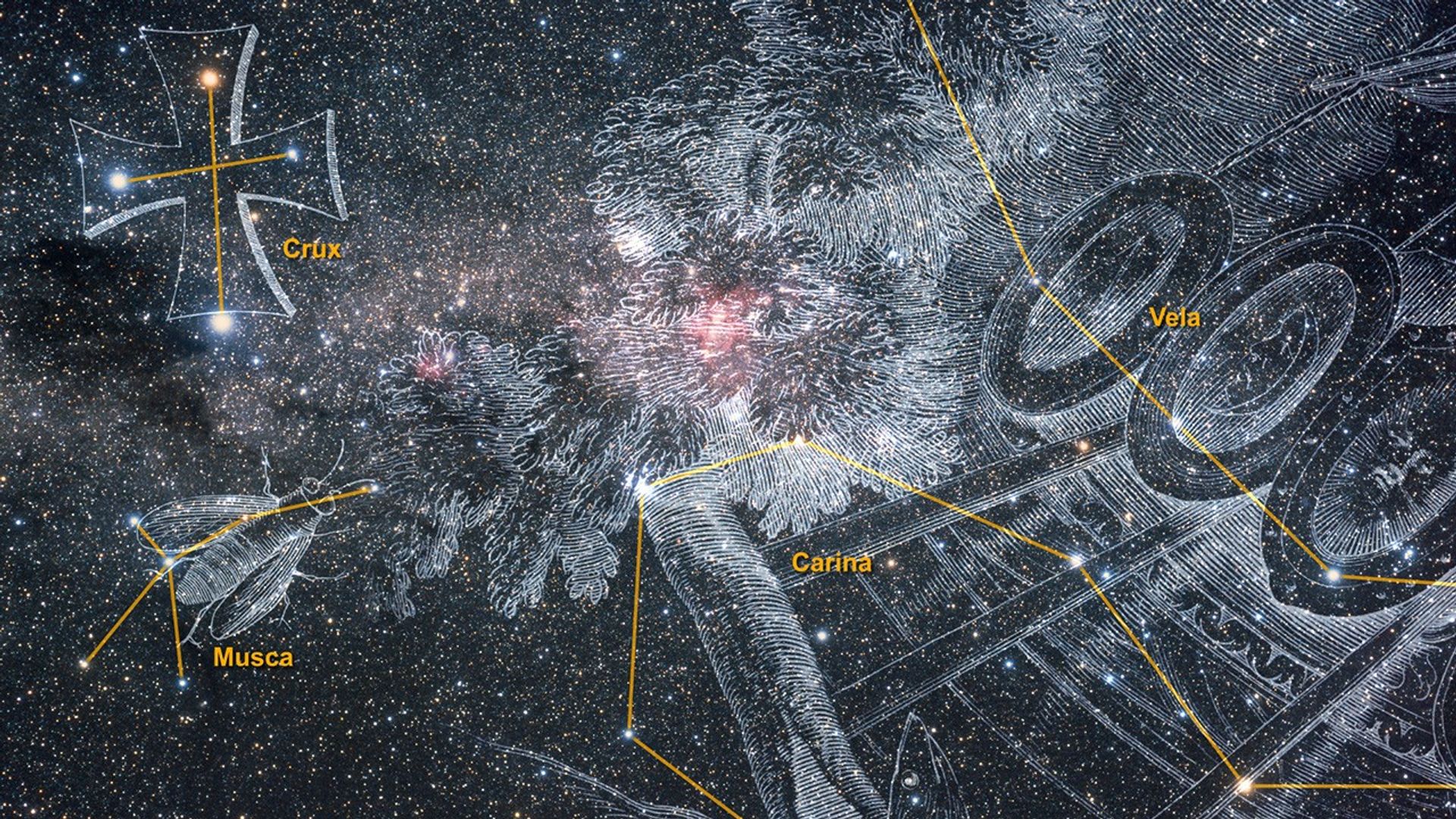
Zoom to Nebula Gum 29 and Star Cluster Westerlund 2
This animation begins with a backyard view of the southern night sky near the constellations of Carina and Vela. After outlining the constellations, the sequence zooms in past the well-known Carina Nebula to the neighboring nebula Gum 29. During the zoom, the images dissolve...
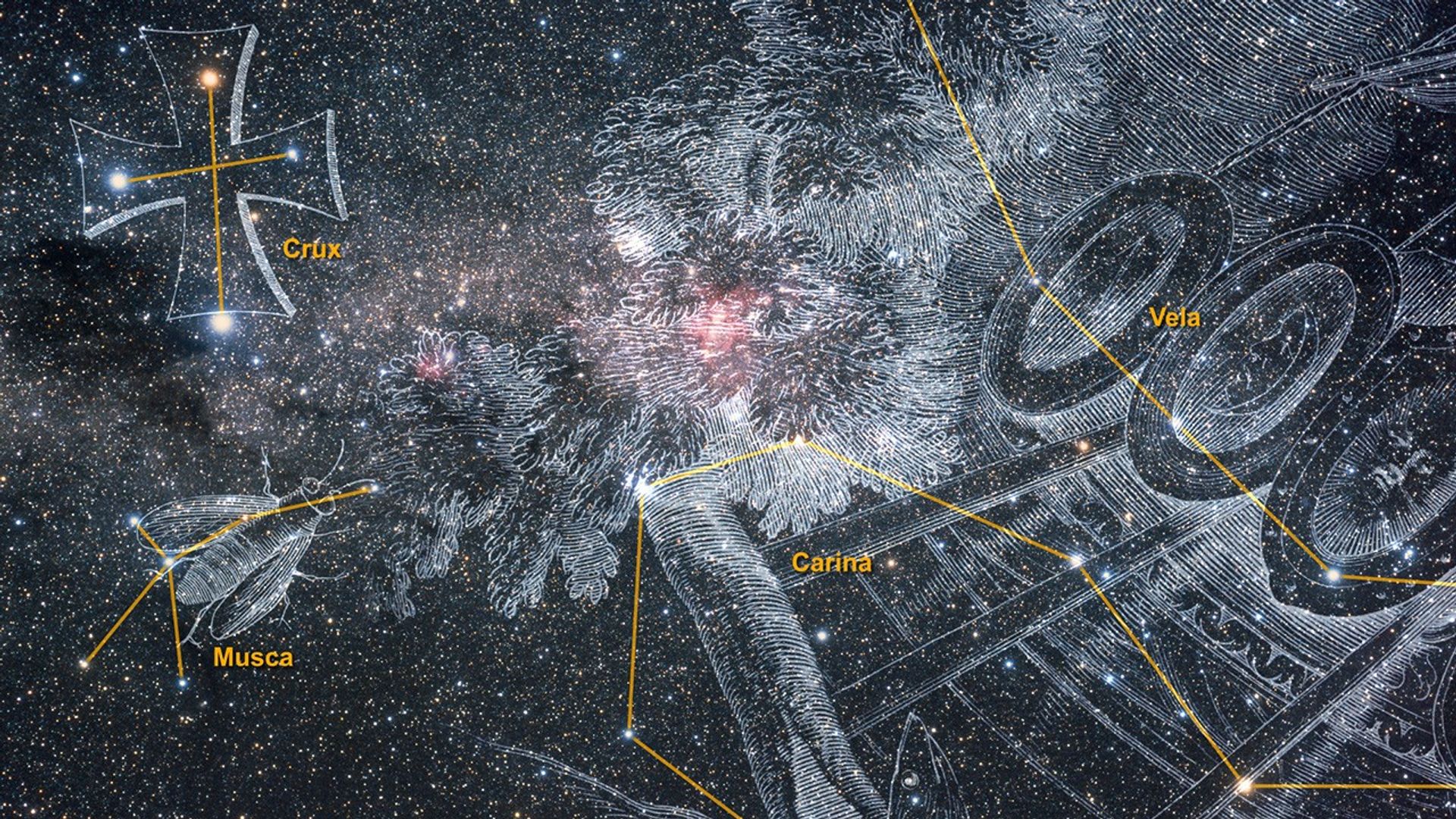
Zoom to Nebula Gum 29 and Flight to Star Cluster Westerlund 2
This visualization provides both two- and three-dimensional perspectives on Hubble's 25th anniversary image of the nebula Gum 29 with the star cluster Westerlund 2 at its core. The animation begins with a backyard view of the southern night sky near the constellations of Carina...
Share
Details
Claire Andreoli
NASA’s Goddard Space Flight Center
Greenbelt, Maryland
claire.andreoli@nasa.gov



